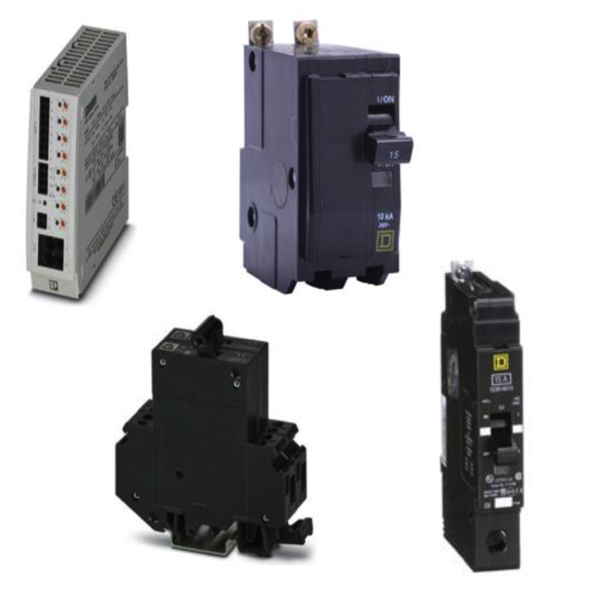Mini Circuit Breakers

Miniature circuit breakers (MCBs) are found in single, double, and four-pole configurations. They can be used to protect both single-phase and three-phase systems. The different types have been developed to suit specific areas of use. 'B'-type MCBs tend to be used in domestic installations. They trip at lower currents and are suitable for the touchy business of inrush current. 'C' and 'D' MCBs tend to be used in commercial and industrial installations. They can handle higher inrush currents operating in those contexts.
There are various reasons why MCBs are better than fuses. MCBs can be reset after they trip, so they do not have to be replaced like fuses do. When a fuse burns out, that's it—there is no more protection. But when an MCB trips, it can be reset, and you are right back in business. You should also be aware that the circuit level of MCBs can often be adjusted.
FAQs
Do miniature circuit breakers provide branch circuit protection, short circuit protection and prevent damage to control circuits?
Yes, miniature circuit breakers provide branch circuit protection, short circuit protection, and prevent damage to control circuits by automatically interrupting the electrical flow when an overcurrent or short circuit condition is detected.
Can DIN rail mounted mini circuit breakers be built with superior shock and vibration resistance while protecting devices in most applications?
Yes, DIN rail mounted miniature circuit breakers can be built with superior shock and vibration resistance while protecting devices in most applications, ensuring reliable operation even in harsh industrial environments.
What do the c curve and d curve mean in the complete range of circuit protection equipment?
The C curve and D curve in circuit protection equipment refer to the tripping characteristics of circuit breakers, with C curve breakers designed for general applications and moderate inrush currents, while D curve breakers handle high inrush currents, such as those from transformers or motors.
Trip Curve Basics Part 1
There are two critical elements in miniature circuit beakers.
Bimetal strip
This strip has two dissimilar metals attached to one another. When a prolonged overcurrent occurs, these metals begin to bend. Because the metals are different, the rate at which they bend is different, therefore causing the strip to bend. If this bending occurs long enough, the bending strip will disrupt the electrical contacts inside the breaker, causing it to trip.
Coil or solenoid
The coil or solenoid is designed for larger overcurrent events like a short circuit or lightning strike. When a large overcurrent event occurs, the plunger in the solenoid is actuated, thereby tripping the breaker.
What are trip curves?
It is both the prolonged overcurrent protection from the bimetal strip and the higher spikes in voltage and current protection from the solenoid that make up the circuit breakers trip curve. How fast or slow these events occur determines the shape of the curve. A trip curve is simply a graphical representation of the expected behavior of a circuit protection device, in this case, a circuit breaker.
This graphical representation looks at two separate pieces of data to provide the information needed to understand when a particular breaker will trip. The first is time, more specifically, the time the circuit breaker experiences a certain amount of overcurrent. The second is the amount of current. In this case, how much more current is passing through the breaker than the protection device is actually rated for.

